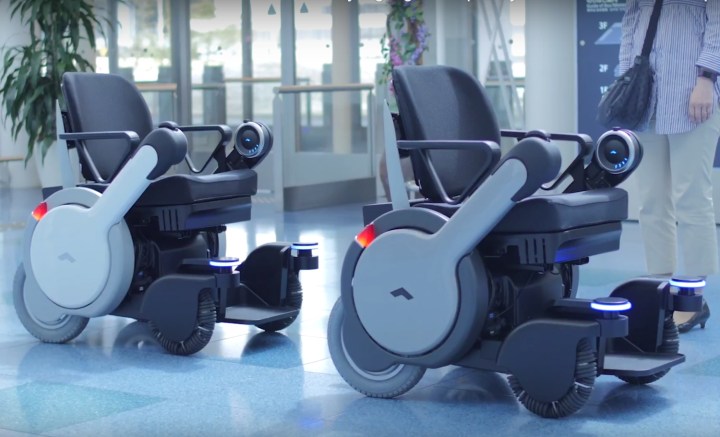
Panasonic wants to have lots of its electric wheelchairs in place at major airports across the country in time for the Olympics, which are coming to Japan in 2020. Trials have just launched at Tokyo’s Haneda International Airport, which is also working to introduce other improvements to make the place more accessible to visitors.
A traveler in need of physical assistance can summon Panasonic’s wheelchair in a couple of taps using its dedicated smartphone app. It might be needed as soon as a passenger exits a plane, or when they arrive at the airport for a flight. In the case of the latter, the wheelchair will find its way to the passenger and take them to the appropriate check-in desk. After that, it will wheel the passenger around the airport according to their requests, with the journey eventually ending at the gate. The wheelchair will then tootle off by itself to help another traveler.
When the airport closes at the end of the day, the high-tech wheelchairs will drive themselves to a designated part of the premises for maintenance and storage, Panasonic said.
Similar to the kinds of features we see with self-driving cars, Panasonic’s autonomous wheelchair uses mapping software and built-in sensors to stop it from bumping into people, suitcases, and all the other obstacles you’d expect to find at a busy airport.
The wheelchair will be tested at Haneda until March 2018 with a view to having a final version ready in time for the sporting extravaganza coming to Japan three years from now.
Self-driving chair
In 2016 Japanese car giant Nissan unveiled a self-driving chair, called the ProPilot. While many thought it was a joke when they first heard about it, or a publicity stunt to showcase the company’s self-driving car developments, the automaker insisted the ProPilot was an actual product concept.
Nissan demonstrated how the chair could be useful for customers waiting in line outside a busy restaurant. With, say, six chairs arranged in a line, the customers can simply sit and wait until they reach the front of the line. When someone vacates the first chair to enter the restaurant, the empty seat automatically drives to the back of the line so a new person can sit down, while the remaining five seats, and the people sitting in them, automatically trundle to the front of the line outside the entrance to the restaurant.
The company suggested the ProPilot could “eliminate the tedium and physical strain of standing in line.”


